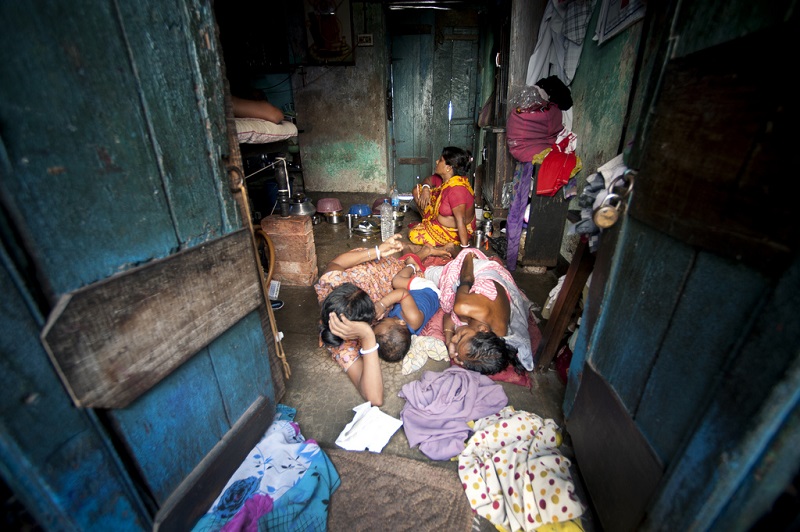
Blogs on cities are supposed to be fancy things, with glamorous photos and world spanning ambition.This blog attempts to answer a very specific question: how did colonial administrative policy create red light districts? Specifically, we will look at colonial Bombay and Calcutta, taking the topic into the present.
For some context, sex work and human trafficking in the Indian context is a large, albeit difficult to measure problem. The U.S. State Department’s Office to Monitor Trafficking in Persons estimates that there are between 20 and 65 million people living in bonded labor conditions in India. Sex work and sex trafficking are similarly measurable against the total population. The Ministry of Women and Child Development states that there are roughly three million women and children engaging in sex work in India, although the National AIDS Control Organization estimates that number is closer to one million. To a certain extent, these numbers are the product of poor reporting and data collection but they also represent the sheer breadth and depth of these issues.
These issues are not new. Red Light areas like Sonagachi in Calcutta and Kamathipura in Bombay were, as Ramberg shows, products of British Imperial policy and law. British administrators and lawmakers were concerned with a variety of issues: venereal disease among British soldiers, fear of British soldiers ‘going native’, bureaucratic convenience, Victorian conservatism, and so on. The social and legal standardization of veshya, besya sule, kanki, concubine, courtesan and others as ‘common prostitutes’ coupled with movement to contain deviant sex created red light areas.
They persist to this day for a variety of reason. As Kotiswaran shows in her legal ethnography of Sonagachi in Kolkata, rent control has a very potent effect on maintaining a Red Light area. Most major Indian cities have had rent control since the 1920s and, in the case of Calcutta, the city had not adjusted its rates since the 1960s. Kotiswaran documents different types of sex worker models, with the most common being independent sex workers. Typically these women rent a room and operate as independent contractors. They end up staying in their room because they either do not desire to return to their home village or they cannot afford to pay the illegal premiums that landlords levy on new tenants–which sometimes run over 100 times the monthly rental price. The landlords, for their part, maintain relations with the sex workers because they have difficulty attracting other types of tenants.

Shah’s investigation of sex workers in Kamathipura in Street Corner Secrets illustrates the power that real estate developers have in reshaping long-standing parts of the city, regardless of how ‘seedy’ they may have been originally. Although not as large as Sonagachi, Kamathipura had as many 30,000 female sex workers (FSWs) that catered to a variety of income brackets. When the City of Mumbai rezoned Kamathipura, there was a powerful convergence of interest: the City no longer wanted to tolerate the FSWs, developers wanted to capitalize on highly valuable land, and there was a national movement to crack down on sex trafficking and sex work. These interests reduced Kamathipura in size dramatically and spread FSWs across the city to either new Red Light areas or mobile areas using cell phone.
The systems that perpetuated them, only a few of which are discussed here, boil down to both economic need and social stigma. These Red Light areas also tend to run into problems with providing services. Many of FSWs are illiterate and traditionally banked through pawnbrokers instead of formal institutions. These types of arrangements mean that even though many FSW can earn more than they could otherwise, they are also faced with many highly risky and costly hurdles to even basic transactions.
It is clear that many of the initial factors that created and perpetuated these Red Light areas had little to do with the welfare of those engaged in sex work. Rather, they were administrative tools to deconstruct existing social structures in India, manage the sexual impulses of colonial troops while preventing intimacy, and to control disease. The meek may have a place in society but it is a tentative one with no guarantees.
Lucinda Ramberg. (2014). Given to the Goddess: South Indian Devadasis and the Sexuality of Religion. Duke University Press.
Ministry of Women and Child Development. (2015). Annual Report 2014-2015. New Delhi.
Office to Monitor and Combat Trafficking in Persons. (2014). Trafficking in Persons Report. Washington DC. Retrieved from http://www.state.gov/documents/organization/226846.pdf
Prabha Kotiswaran. (2008). Born unto Brothels—Toward a Legal Ethnography of Sex Work in an Indian Red-Light Area. Law & Social Inquiry, 33(3), 579–629.
Svati P. Shah. (2014). Street Corner Secrets: Sex, Work, and Migration in the City of Mumbai. Raleigh: Duke University Press.

